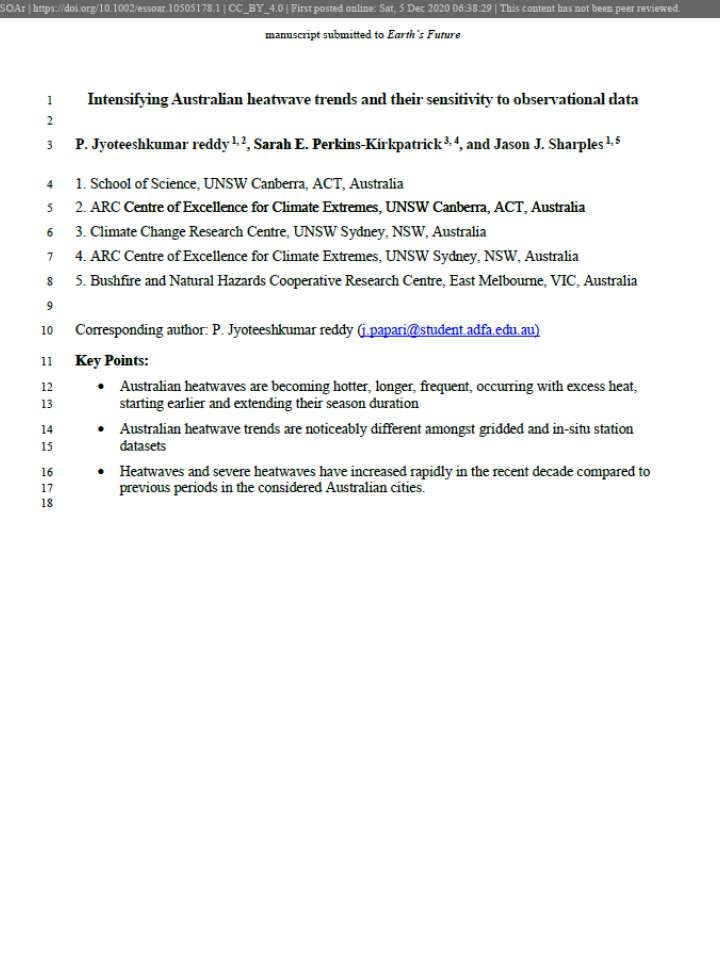Intensifying Australian heatwave trends and their sensitivity to observational data
This report discusses how heatwaves are an accustomed extreme event of the Australian climate and cause catastrophic impacts on human health, agriculture, and urban and natural systems. Heatwaves are measured by various metrics developed for the employment of different impact-based studies. It has analysed the trends in Australia-wide heatwave metrics (frequency, duration, intensity, number, cumulative magnitude, timing, and season duration) across 69 extended summer seasons (i.e., from Nov-1951 to Mar-2020).
The report’s findings not only emphasize that heatwaves are becoming hotter, longer, and more frequent, but also signify that they are occurring with excess heat, commencing much earlier, and expanding their season over many parts of Australia in recent decades. It also investigated the heatwave and severe heatwave trends at a local city-scale using two different observational products (AWAP gridded dataset and ACORN_SATV2 station data) over selected time periods (1911 to 2019, 1911-64, and 1964-2019).
Results suggest that heatwave trends are different amongst the two datasets. However, the results highlight that the severe heatwave cumulative magnitude and their season duration has been increasing significantly in recent decades over the southern coastal cities of Australia (like Melbourne and Adelaide). The climatological mean of the most heatwave and severe heatwave metrics is substantially higher in recent decades compared to earlier periods across all the cities considered. The findings of our study have significant implications for the development of advanced 3heatwave planning and adaptation strategies.
Explore further
